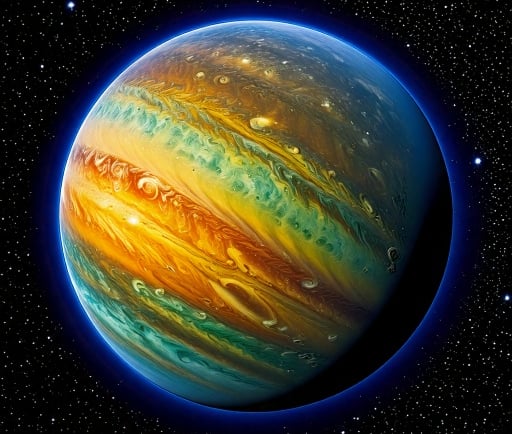CFHTWIR-OPH 98 B: A Sub Stellar Orbit


Introduction to CFHTwir-Oph 98 b
The discovery of exoplanets has transformed our understanding of the universe, revealing unique worlds that exist beyond our solar system. One of the most intriguing gas giants is CFHTwir-Oph 98 b, a massive planet that orbits an M-type star. With a mass approximately 7.8 times that of Jupiter, this exoplanet offers significant insights into planetary systems around cooler stars, commonly known as red dwarfs.
Characteristics of CFHTwir-Oph 98 b
CFHTwir-Oph 98 b is classified as a gas giant, primarily composed of hydrogen and helium, making it similar in composition to Jupiter. It is notable for its impressive mass, which places it in a distinct category among exoplanets discovered to date. The exoplanet's orbital period is astonishing, taking approximately 22,027.4 years to complete a single orbit around its parent star. Such a lengthy orbital period is characteristic of distant planets that reside far from their stars, highlighting how divergent planetary dynamics can be across various solar systems.
Significance of the M-type Star
The M-type star around which CFHTwir-Oph 98 b orbits plays an essential role in the planet's characteristics and potential habitability. M-type stars, also known as red dwarfs, are the most common type of star in the universe. They are smaller and cooler than our Sun, often leading to longer lifespans. Interestingly, because red dwarfs are dimmer, planets orbiting within their habitable zone experience a unique set of conditions. Such environments can lead to intriguing weather patterns and temperature ranges on gas giants like CFHTwir-Oph 98 b.
The potential for gas giants to host a variety of atmospheres and exotic weather phenomena adds another layer of interest to the study of exoplanets. Understanding how such massive planets behave under different stellar conditions allows astronomers to refine their models of planetary formation and evolution.
Conclusion
The exploration of CFHTwir-Oph 98 b serves as a remarkable example of the diverse range of planetary systems present in the cosmos. Its significant mass, lengthy orbital period, and relationship with an M-type star open doors to new research avenues in astrophysics and planetary studies. As telescopes and detection techniques continue to advance, the secrets held by CFHTwir-Oph 98 b and similar exoplanets will likely unveil further mysteries about the formation of our universe and the potential for life beyond Earth.
